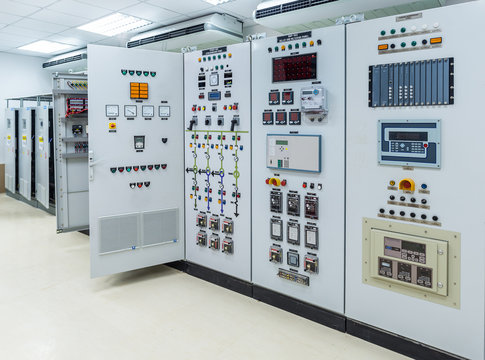A power system analysis serves to offer your facility with a power system that is dependable, safe, and efficient in both typical and unusual operating conditions. Understanding how a system will operate in different configurations and the effects of disturbances like the switching of capacitors, the starting of a big motor, and arc flash incident energy are the goals of a power system analysis. To guarantee the reliable operation of safety equipment in the event of a short circuit or other breakdown, investigation of the power system may also be required. For a consistent and reliable energy supply to be maintained, power system research is essential. In all operating conditions, a well-designed power system ensures dependable operation and maximizes plant availability. Systems with poor development have a higher risk of failure, faults, inefficiencies, and security breaches.
An average power system analysis may comprise most or all the following sub studies:
- A load flow analysis and inquiry
- Investigation and assessment of short circuits
- Evaluation of relay coordination
- Research and evaluation of arc flash threats
- Harmonics research
- Analysis of dynamics and fluctuations
- Explore the world
In this blog post, we will look at the first three studies and grasp the guiding principles and procedures behind each one.
Study and Evaluation of the Flow of Loads:
An electrical network is examined in a load flow analysis to determine the power flow. In addition to losses, voltage, current, and power factor, it aids in determining the power system’s operating condition and the quantity of active and reactive power produced.
The following three phases made up the load flow study:
- Power system networks and component modelling
- The creation of equations for load flow
- Using numerical methods to solve equations for flow and load.
There are three ways to compute data from the electricity system:
- One of the most popular analytical methods is the Gauss-Seidel System. This strategy offers the benefits of being easy to implement, needing little computer resources, and hastening the operation’s completion. However, due to the delayed convergence, extra iterations are necessary. The quantity of iterations increases along with the number of buses.
- The quadratic convergence used by the Newton-Raphson approach is advantageous in challenging circumstances. This approach uses less computer resources since it needs fewer iterations to reach convergence. Its improved accuracy is a result of simpler elements such slack bus selection and regulating transformers. It can be difficult to program, and it uses quite a lot of computer memory.
- The Fast Decoupled Load Flow System is another approach to load flow analysis (FDLF). This method’s main benefit is that it uses less computer memory. Since the processing speed is five times quicker than the Newton-Raphson approach, it is a better option for real-time management of electricity grids. Only specific circumstances allow this application. As a result, it is more challenging to adapt it to other power sector challenges, including flow or system protection.
Analysis & Study of Short Circuits:
In a short circuit analysis, one or more of the following types of short circuits will be assessed:
- A line-to-line fault happens when two phases fail at once.
- Only one phase contacts the ground during a single line-to-ground failure.
- Double line-to-ground fault: simultaneous shorting of both phases and the ground
- A three-phase fault that causes all three phases to short out simultaneously.
It will be easier to create a one-line schematic of the power distribution system after the issue is identified. Utilizing the single-line model you have constructed and an impedance diagram with numerical values for the utility source, transformer, and conductor in relation to the usable voltage of each component, you may calculate short circuits. The full-load amps, the transformer multiplier, and the short circuit current are among the computed values. To ensure that the power distribution system is outfitted with the appropriate safety measures to prevent danger and downtime at various locations, it is crucial to compare the gathered data to the equipment ratings.
Coordinating the Analysis of Relays:
Relay coordination is an essential part of the power system protection architecture because coordination systems make it possible for quick, trustworthy, and selective relay operations to isolate the issue. The extent to which overcurrent protection devices are essential to the power system is determined by a coordination analysis. Additionally, it aids in establishing the correct specifications, arrangements, and measurements to strike a balance between equipment security and constrained system functioning.
To model the system, data collecting procedures are carried out using power system software, such as ETAP. The fault currents at each electrical point are measured after a short circuit investigation. The consequences of system equipment failures are minimized by the selection and calibration of the protection devices. Locating areas of coordination breakdown is made easier by comparing the protective device’s time-current characteristic curves. To ensure that protective devices work reliably and selectively, changes are made as needed.
Power System Analysis Advantages Includes:
- Increasing the reliability of the electrical grid.
- Using equipment with the proper power rating.
- Increased security and less risk of electrical hazard
- Adherence to regulatory standards and requirements for electrical installation.
- The suggestion of alternative methods to improve the effectiveness and dependability of the system.
- The recording of the present state of the power system in preparation for forthcoming inspections.
To track the voltage at various buses as well as the actual and reactive power flow between buses, analyze the system under various fault conditions, and determine the system’s resistance to minor and major disturbances, CareLabs offers Load Flow study & analysis, Short Circuit study & analysis, and Relay coordination analysis. To have your company’s power infrastructure in Germany analyzed, contact us or get a quotation. Within 24 hours, a member of our customer support team will answer.




